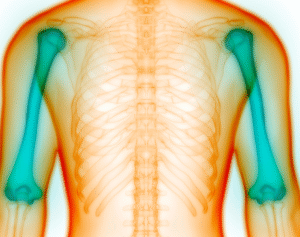Unveiling the Unusual: Exploring the Rare and Strange Symptoms of Fibromyalgia
Unveiling the Unusual: Exploring the Rare and Strange Symptoms of Fibromyalgia
Fibromyalgia is widely recognized for its hallmark symptoms of widespread pain, fatigue, and cognitive disturbances. However, many individuals experience a spectrum of less common, strange symptoms that often go unacknowledged. Understanding these atypical manifestations is crucial for comprehensive management and validation of patient experiences.
Neurological Sensations
Paresthesia
Paresthesia involves abnormal sensations such as tingling, numbness, or a crawling feeling on the skin. These sensations can occur without an apparent cause and may affect various body parts, including the hands, feet, and face. They are believed to result from the nervous system’s altered processing of sensory information.
Allodynia
Allodynia is characterized by pain resulting from stimuli that do not normally provoke pain, such as a light touch or mild temperature changes. This heightened sensitivity is a common yet often misunderstood symptom of fibromyalgia.
Sensory Sensitivities
Sound and Light Sensitivity
Individuals with fibromyalgia may experience heightened sensitivity to sounds and lights, leading to discomfort or even pain in response to everyday environmental stimuli. This hypersensitivity can significantly impact daily functioning and quality of life.
Smell Sensitivity
An increased sensitivity to odors is another unusual symptom, where even mild scents can trigger nausea, headaches, or other adverse reactions. This symptom underscores the complex sensory processing issues associated with fibromyalgia.
Dermatological Manifestations
Skin Rashes and Itching
Some individuals report unexplained skin rashes, itching, or a burning sensation without visible irritation. These dermatological symptoms may be linked to the nervous system’s altered perception of sensory inputs.
Lipomas
The development of lipomas, benign fatty lumps under the skin, has been observed in some fibromyalgia patients. While not harmful, their presence can cause discomfort and concern.
Autonomic Nervous System Symptoms
Excessive Sweating
Hyperhidrosis, or excessive sweating, can occur in fibromyalgia, often without a clear trigger. This symptom may be related to dysregulation of the autonomic nervous system
Temperature Sensitivity
Individuals may experience an abnormal sensitivity to temperature changes, feeling excessively hot or cold without environmental justification. This symptom reflects the body’s impaired ability to regulate temperature.
Gastrointestinal and Urinary Issues
Irritable Bowel Syndrome (IBS)
A significant number of fibromyalgia patients report IBS symptoms, including abdominal pain, bloating, and altered bowel habits. The overlap between fibromyalgia and IBS suggests a shared pathophysiological mechanism.
Interstitial Cystitis
Some individuals experience bladder pain and urinary frequency, symptoms characteristic of interstitial cystitis. This condition can coexist with fibromyalgia, compounding the patient’s discomfort.
Cognitive and Psychological Symptoms
Brain Fog
Also known as “fibro fog,” this symptom encompasses memory lapses, difficulty concentrating, and mental confusion. These cognitive challenges can be as debilitating as physical pain for many patients.
Mood Disorders
Depression and anxiety are prevalent among fibromyalgia sufferers, potentially stemming from chronic pain and the condition’s impact on daily life. These psychological symptoms require attention alongside physical treatments.
Musculoskeletal Anomalies
Muscle Twitches and Cramps
Involuntary muscle twitches and cramps are reported by some patients, often occurring without warning and disrupting sleep or daily activities. These symptoms may be linked to nerve hyperexcitability.
Restless Legs Syndrome
Characterized by an uncontrollable urge to move the legs, especially at night, restless legs syndrome can interfere with sleep and exacerbate fatigue. Its association with fibromyalgia highlights the condition’s complex neurological underpinnings.
Conclusion
Fibromyalgia encompasses a wide array of symptoms beyond the commonly recognized pain and fatigue. Acknowledging and understanding these strange and less-known manifestations are vital for accurate diagnosis and effective management. Healthcare providers and patients alike should remain vigilant for these atypical symptoms to ensure comprehensive care.



